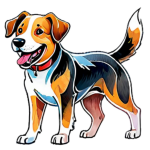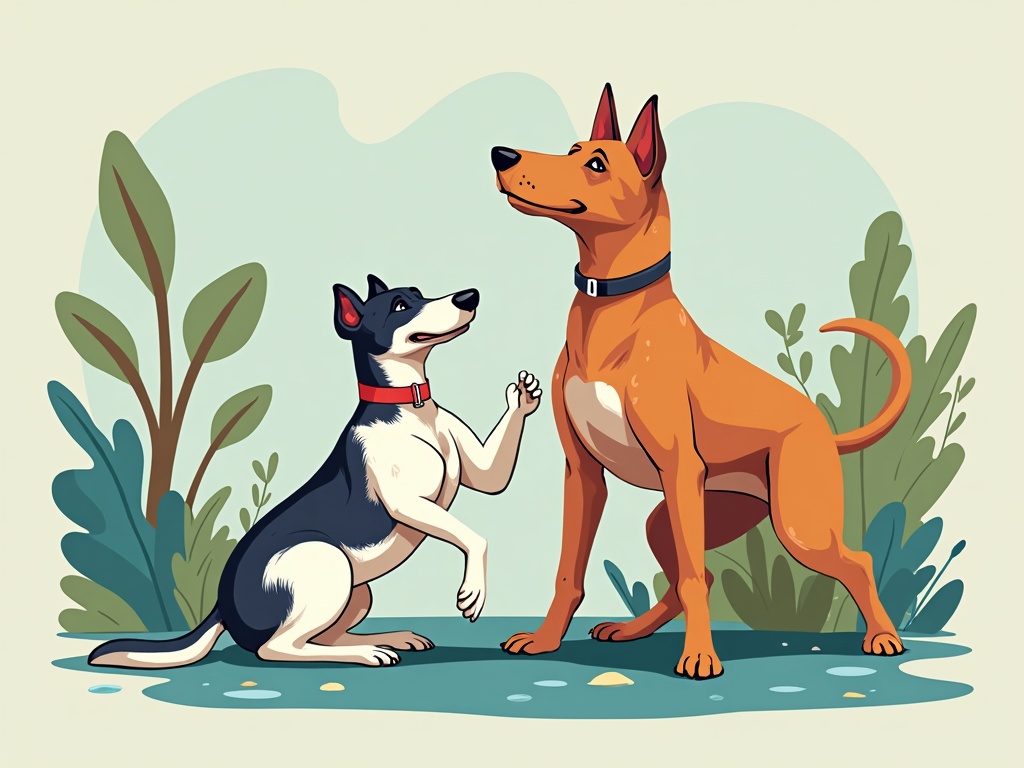Cool Down Stretches for Dogs: A Guide to Preventing Injuries and Enhancing Recovery
Imagine your canine companion, breathless but beaming, after a spirited game of fetch or an invigorating hike. Just like human athletes, dogs benefit immensely from a proper cool-down routine. Neglecting this crucial step can lead to stiffness, soreness, and even injury. But fear not! This comprehensive guide will equip you with everything you need to know about cool-down stretches for dogs, ensuring your furry friend stays happy, healthy, and ready for their next adventure.
Why Cool Down Stretches are Essential for Dogs
Think of your dog's muscles like rubber bands. When they're actively running, jumping, and playing, those bands are stretched and contracted repeatedly. Without a proper cool-down, these muscles can tighten up, losing flexibility and increasing the risk of strains and tears. Cool-down stretches help to:
- Reduce muscle soreness: Gently stretching muscles after exercise helps to flush out lactic acid, a byproduct of intense activity that contributes to soreness.
- Improve flexibility: Regular cool-down stretching maintains and enhances your dog's range of motion, allowing them to move more freely and comfortably.
- Prevent injuries: Flexible muscles are less prone to injury. Stretching increases blood flow and prepares the muscles for future activity.
- Promote relaxation: Stretching can have a calming effect on your dog, helping them transition from activity to rest.
When to Implement Cool Down Stretches
Cool-down stretches are best performed immediately after exercise, while your dog's muscles are still warm and pliable. This could be after:
- A long walk or run
- A vigorous playtime session
- Agility training or other canine sports
- Any activity that elevates your dog's heart rate and engages their muscles.
Remember to adjust the intensity and duration of the stretches based on your dog's fitness level and the intensity of the activity. A leisurely stroll probably doesn't require the same extensive cool-down as a high-energy frisbee session.
Essential Cool Down Stretches for Dogs
Before starting any stretching routine, ensure your dog is relaxed and receptive. Use a calm, soothing voice and offer gentle praise. Never force a stretch; if your dog shows signs of discomfort, stop immediately. Each stretch should be held for 15-30 seconds, repeating 2-3 times.
1. Gentle Walking
This is the most basic and arguably most important part of the cool-down. After intense exercise, slow your dog down to a leisurely walk for 5-10 minutes. This allows their heart rate to gradually return to normal and helps to prevent muscle stiffness.
2. Spinal Extension Stretch (Belly Stretch)
This stretch targets the abdominal muscles and back. Have your dog stand comfortably. Gently stroke from their neck towards their tail along their spine. This should encourage them to gently arch their back, creating a slight spinal extension.
3. Spinal Flexion Stretch (Back Arch)
This stretch is the opposite of the spinal extension and targets the back muscles. While your dog is standing comfortably, gently stroke their belly. This may encourage them to round their back slightly. This stretches the muscles along their spine.
4. Shoulder Stretch
With your dog standing, gently extend one front leg forward, supporting just above the elbow. Hold the leg straight and gently move it forward until you feel a slight stretch in the shoulder. Repeat on the other side.
5. Hip Extension Stretch (Hamstring Stretch)
This stretch targets the hamstrings. With your dog standing, gently extend one rear leg backward, supporting just above the knee. Hold the leg straight and gently move it backward until you feel a slight stretch in the hip and hamstring. Repeat on the other side. It’s important not to overextend!
6. Hip Flexion Stretch (Groin Stretch)
This stretch targets the groin muscles. With your dog standing, gently lift one rear leg and flex it towards their chest, supporting just above the knee. Hold the leg in this position until you feel a slight stretch in the groin area. Repeat on the other side.
7. Neck Stretches
Gentle neck stretches can relieve tension. With a treat in your hand, slowly guide your dog's nose towards their shoulder, then towards their chest, and then up towards their back. Repeat these movements a few times on each side. Be sure to do these movements gently.
Important Considerations and Precautions
Consult your veterinarian: Before starting any new exercise or stretching program, it’s always best to consult with your veterinarian, especially if your dog has any pre-existing health conditions. They can assess your dog's individual needs and advise on appropriate exercises and stretches.
Observe your dog's body language: Pay close attention to your dog's cues during stretching. If they show any signs of pain, resistance, or discomfort, stop immediately. Signs of discomfort might include:
Whining or whimpering
Pulling away
Limping
Tense muscles
Lip licking or yawning (signs of stress)
Avoid overstretching: Never force a stretch beyond your dog's natural range of motion. Gentle and gradual movements are key.
Warm-up before stretching: While this article focuses on cool-down stretches, remember that a proper warm-up is equally important before exercise. A light walk or gentle play can help prepare your dog's muscles for activity.
Be patient and consistent: It may take time for your dog to become comfortable with stretching. Be patient, and make it a positive experience by using treats and praise. Consistency is key to seeing results.
Senior dogs and dogs with arthritis: Stretching is particularly beneficial for senior dogs and dogs with arthritis, but it's crucial to be extra gentle and cautious. Focus on gentle range-of-motion exercises and avoid any stretches that cause pain.
Beyond Stretching: Completing the Cool-Down Routine
Cool-down stretches are an important part of a complete cool-down routine, but they're not the only element. Consider incorporating these additional steps:
Hydration: Offer your dog fresh water after exercise to replenish fluids lost through panting and sweating (yes, dogs sweat, mostly through their paws!).
Massage: A gentle massage can help to further relax your dog's muscles and improve circulation. Focus on areas that may be particularly tense, such as the shoulders, neck, and legs.
Rest: Allow your dog to rest and recover after exercise. Provide a comfortable and quiet space where they can relax and recharge.
The Long-Term Benefits of Cool Down Stretches
Incorporating regular cool-down stretches into your dog's routine can provide a multitude of long-term benefits:
Improved athletic performance: Flexible and well-conditioned muscles allow your dog to perform better during physical activities.
Reduced risk of age-related stiffness: Maintaining flexibility throughout your dog's life can help to minimize the effects of aging on their joints and muscles.
Enhanced quality of life: A comfortable and mobile dog is a happy dog! Cool-down stretches can help to improve your dog's overall well-being and quality of life.
Stronger bond between you and your dog: The act of stretching and massaging your dog can be a bonding experience, strengthening the connection between you and your furry friend.
By understanding the importance of cool-down stretches and implementing them consistently, you can help your dog stay active, healthy, and happy for years to come. Embrace these techniques, tailor them to your dog's individual needs, and watch them eagerly anticipate their post-exercise pampering. After all, a happy dog is an active dog, and a little stretching goes a long way.


